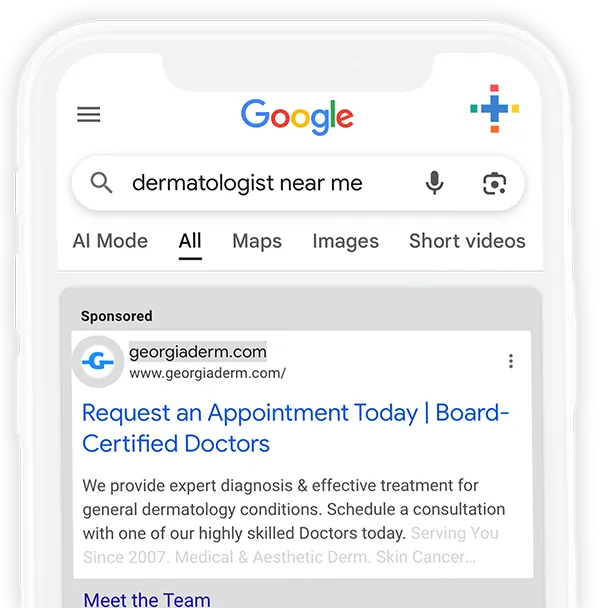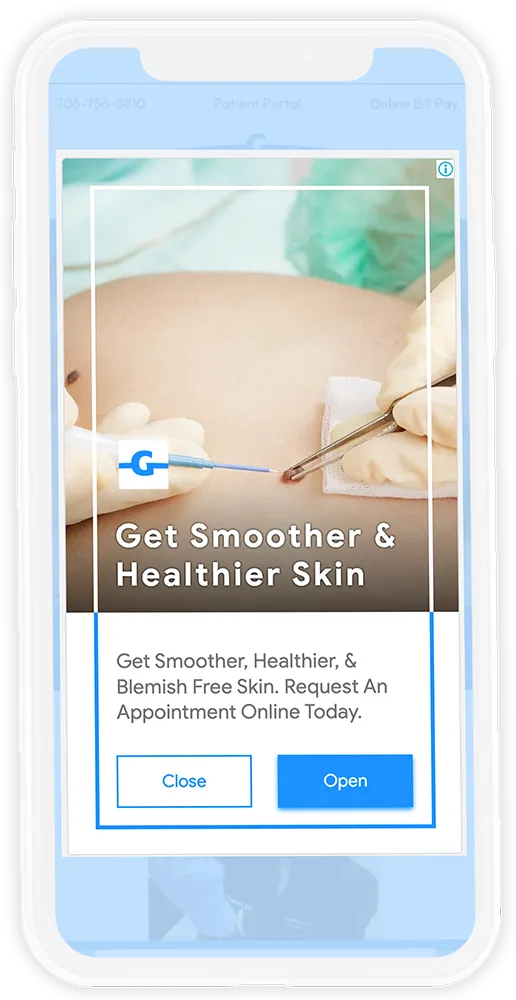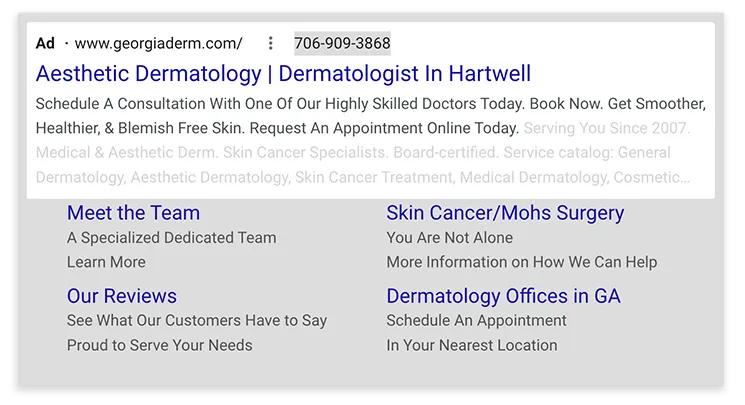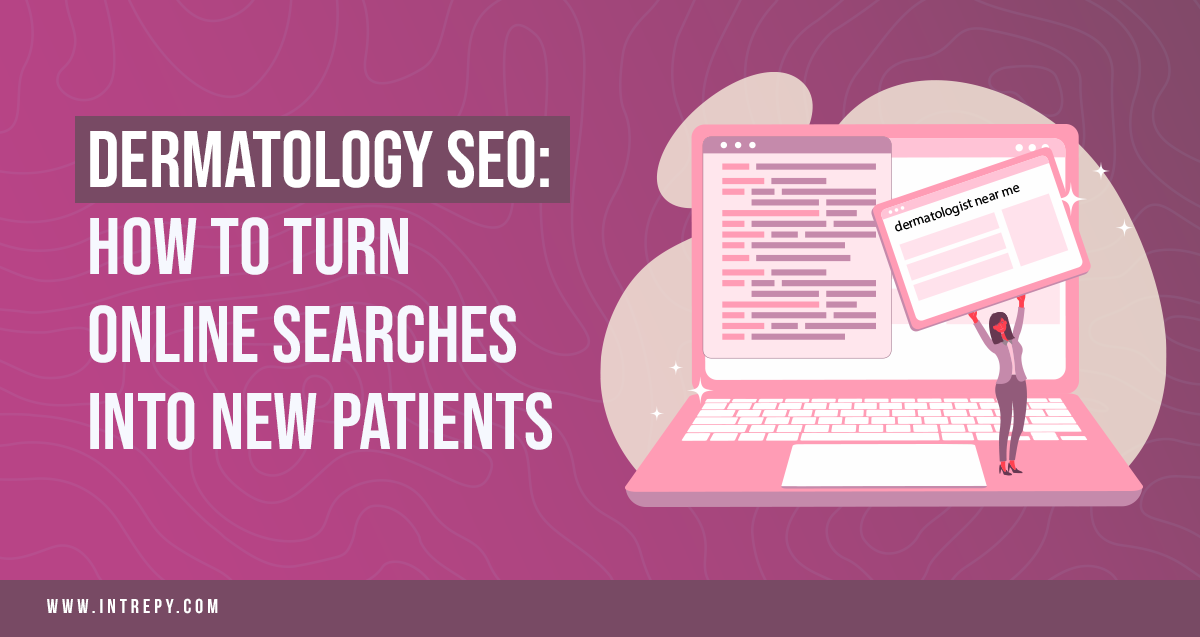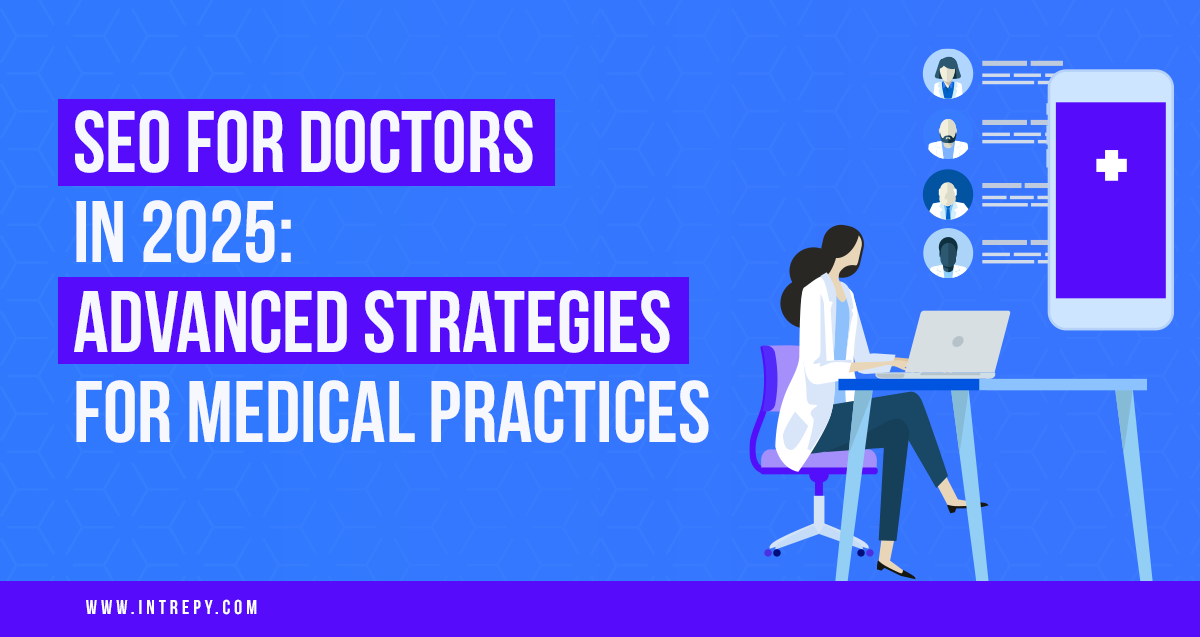The Ultimate Guide to Dermatology Advertising: Digital & Traditional Tactics That Deliver Results
Running a dermatology practice today requires more than clinical excellence. Patients are no longer relying solely on physician referrals; they’re actively searching online, comparing providers, and making decisions based on what they see across digital channels. This is where dermatology advertising becomes essential.
At Intrepy Healthcare Marketing, we help dermatologists grow their practices by creating effective advertising campaigns for medical, cosmetic, and surgical services. Our goal is to attract high-quality patients, build trust, and maximize your return on investment. Whether you’re promoting acne treatments, Botox, Mohs surgery, or laser resurfacing, the right advertising strategy ensures your practice is visible where it matters most.
We’re dedicated to providing you with effective, proven advertising strategies that help practices like yours stand out, connect with the right patients, and convert interest into booked appointments. This blog will help you learn more about the best tactics for Dermatology Advertising.
3 Key Takeaways for Dermatology Advertising Strategies
- Dermatology advertising bridges the gap between visibility and patient acquisition. With patients actively searching online, targeted advertising on Google, Meta, and YouTube ensures your practice appears where high-intent patients are making decisions.
- Strategic campaign structure drives measurable ROI. Building service-specific Google Ads, implementing retargeting, and optimizing landing pages turn clicks into booked appointments while keeping costs under control.
- AI is redefining dermatology marketing. AI-powered targeting and analytics help identify the right patients, personalize messaging, and reduce wasted ad spend, amplifying both reach and return on investment.
Dermatology advertising isn’t just about clicks; it’s about connecting the right patients to the right services, at the right moment. To understand this better, book a Dermatology Advertising Session.
Table of Contents:
-
- Why does dermatology advertising matter right now?
- What’s the most effective way to structure Google Ads for a dermatology practice?
- Which keywords should I prioritize, and what keywords should I avoid?
- How do I make social ads (Instagram/Facebook/TikTok) actually convert?
- What’s the role of retargeting ads in dermatology marketing?
- Should I invest in video and display ads?
- Do print, radio, and billboards still work for dermatology?
- How do I turn ad clicks into booked appointments?
- What offers work best without discounting the brand?
- How do I stay HIPAA-safe and compliant?
- What creative elements consistently improve ad performance?
- How should I set budgets and bids?
- What tracking stack do I need to prove ROI?
- How do I use seasonality to my advantage?
- What local elements move the needle most?
- How do I scale once campaigns are working?
- How does AI impact dermatology advertising?
17 Proven Dermatology Marketing Strategies
Advertising is a powerful strategy to unlock growth opportunities for your dermatology practice, especially if your organic search visibility is limited. Let’s answer some of your pressing dermatology advertising questions.
Q1) Why does dermatology advertising matter right now?
A: Competition is intense for dermatology practices, and patient journeys are digital-first. Advertising places your practice in front of high-intent searchers (“dermatologist near me,” “Botox in [city]”), accelerates cosmetic cash-pay demand, and complements SEO strategies with immediate visibility. It also allows you to control acquisition costs and scale predictably.
Q2) What’s the most effective way to structure Google Ads for a dermatology practice?
A: Build service-specific campaigns (e.g., Acne, Botox/Fillers, Mohs, Skin Checks, Laser Resurfacing). Use tight ad groups with exact/phrase match keywords, geo-target a narrow radius around locations, and write copy that emphasizes trust signals and differentiators (board-certified, same-week appointments, natural results). Always send clicks to matching landing pages.
Q3) Which keywords should I prioritize, and what keywords should I avoid?
A: Prioritize high-intent terms (e.g., “acne treatment near me,” “skin cancer screening [city],” “Dermatologist in [city]” “Botox cost [city]”) and brand + competitor terms (where allowed). Maintain a negative keyword list (jobs, education, free, school, DIY, wholesale, residency) to keep CPL down.
Q4) How do I make social ads (Instagram/Facebook/TikTok) actually convert?
A: Lean into short-form video (10–20 seconds), clear offers (e.g., complimentary consult), and authentic provider intros. Target by age, gender, location, and interests (skincare/beauty/wellness). Test 3–5 creatives at a time, refresh monthly, and use lead forms or link to a frictionless booking page.
Q5) What’s the role of retargeting ads in dermatology?
A: Most prospects won’t book on the first click. Use retargeting to re-engage visitors based on on-site behavior (e.g., viewed Microneedling → show testimonial or limited-time consult ad). Cap frequency, rotate creatives, and exclude recent converters to protect ROI.
Q6) Should I invest in video and display ads?
A: Simply put, yes. YouTube pre-rolls featuring provider credibility, patient stories (with written HIPAA consent), and “day-in-the-clinic” content build trust. Pair with Display for awareness. Measure view-through conversions and assisted conversions to capture full value.
Q7) Do print, radio, and billboards still work for dermatology?
A: In the right markets, yes. Use local magazines for cosmetic segments, radio for seasonal pushes (e.g., sun-damage repair), and OOH near high-traffic corridors. Ensure that creatives and CTAs align with digital campaigns and track conversions using unique URLs/QR codes.
Q8) How do I turn ad clicks into booked appointments?
A: Use dedicated landing pages per service. Include a benefit-led headline, before/after gallery (consented), provider credentials, social proof, FAQs, and single, persistent CTA (“Book Now”). Keep forms short (Name, Phone/Email, Service, Preferred Time). Aim for sub-3-second page load times and an exceptional mobile user experience.
Advertising strategy is just one aspect of marketing for dermatologists. Read our blog about dermatology marketing strategies to learn more.
Q9) What offers work best without discounting the brand?
A: Lead with value vs. price: complimentary cosmetic consults, skincare analysis, or “new patient skin check availability this week.” Bundle services (e.g., resurfacing + post-care kit). If discounting, set clear eligibility windows and advertise limited quantities to maintain premium positioning.
Q10) How do I stay HIPAA-safe and compliant?
A: Obtain written HIPAA-compliant consent for any testimonial, photo, or video. Avoid claims that guarantee results. Don’t target or imply sensitive conditions. Keep remarketing audiences’ behavioral data (site/page visits, not diagnosis-based). Train staff on content approvals and maintain release forms on file for future reference.
Q11) What creative elements consistently improve ad performance?
A: Show faces and outcomes, not devices. Use tight framing, captions for sound-off viewers, and credible micro-proof (board certification badges, procedure counts, technology names patients recognize). Add clear next steps and real timelines (“Most patients back to routine in 24–48 hours”).
Q12) How should I set budgets and bids?
A: Allocate 60–70% to high-intent search, 20–30% to social/video, and 10–20% to retargeting/experiments. Start with Max Clicks + CPC caps and once you have conversion data switch to tCPA or tROAS bidding. Fund top performers weekly; pause ad groups with CPL > 150% of target.
Q13) What tracking stack do I need to prove ROI?
A: Hook up call tracking (dynamic number insertion), form tracking, and CRM with UTM capture to connect ad → lead → appointment → revenue. Track CPL, CPA, CVR, CTR, ROAS, and new-patient mix (medical vs. cosmetic). Build a weekly dashboard and review query reports and placements.
Q14) How do I use seasonality to my advantage?
A: Map a 12-month content calendar: acne/back-to-school, sunscreen/skin checks in spring, sun-damage repair and resurfacing in fall/winter, filler/holiday glow Q4, laser hair removal pre-summer. Pre-build creatives and landing pages; warm audiences with content 4–6 weeks before peak demand.
Q15) What local elements move the needle most?
A: Geo-target tight radii around each clinic, tailor copy with neighborhood names/landmarks, use location extensions, and keep your Google Business Profiles pristine (categories, services, photos, FAQs, booking links). Mirror those local cues on landing pages to boost Quality Score and conversions.
Q16) How do I scale once campaigns are working?
A: Scale dermatology Google Ads by raising budgets gradually, expanding radius targeting, refreshing keywords and ad copy, allocating 20–25% to new formats, and using cross-channel retargeting. For the best insight and controlled, measurable growth, stick with Search and Display and avoid Performance Max campaigns
Q17) How Does AI Impact Dermatology Advertising?
A: AI is transforming how dermatology practices target and attract new patients. Through advanced data analysis, AI identifies high-intent audiences, such as patients searching for acne treatment, Botox, or skin cancer screenings, and delivers ads tailored to their interests and search behavior. For dermatology practices, combining AI-powered advertising with optimized SEO ensures consistent visibility across both paid and organic channels, helping you reach more qualified patients while reducing wasted ad spend.
Get More Patients With Proven Dermatology Advertising
Running a dermatology practice means more than offering excellent care — it means ensuring patients can actually find and choose you. Advertising bridges that gap. When done right, dermatology advertising doesn’t just bring in more clicks, it brings in the right patients for your medical, cosmetic, and surgical services. It protects your brand, highlights your expertise, and turns your marketing into measurable ROI.
Grow Your Dermatology Practice With Intrepy Healthcare Marketing
At Intrepy Healthcare Marketing, we partner with dermatology offices nationwide to build and manage compliant, ROI-driven advertising campaigns that convert interest into appointments. Whether you’re looking to attract new cosmetic patients, expand awareness for your medical dermatology services, or scale your practice’s overall growth, we’ll help you stand out where it matters most.
📞 Book your free strategy session today, and let’s design an advertising plan that fuels your dermatology practice’s success.
About the Authors
By Tomi Barton, Chief Marketing Officer, Intrepy Healthcare Marketing
Tomi Barton is the Chief Marketing Officer at Intrepy Healthcare Marketing, where she leads patient acquisition, ROI-driven digital strategies, and brand growth for medical practices across 40+ specialties. With training from Cambridge Marketing College and a Master’s in Internet Marketing from USF, she combines clinical literacy, marketing expertise, and AMWA-trained medical writing skills to create content and campaigns that build strong healthcare brands and measurable growth. She specializes in healthcare strategy, direct-to-patient marketing, AI visibility, and ROI optimization for physicians and specialty medical practices.
Co-authored by Megan Patton, Healthcare Content Development Specialist
Megan is an experienced healthcare content strategist and writer at Intrepy Healthcare Marketing. She specializes in creating educational, high-converting SEO content for medical practices, bringing a deep understanding of patient search and funnel behavior.
